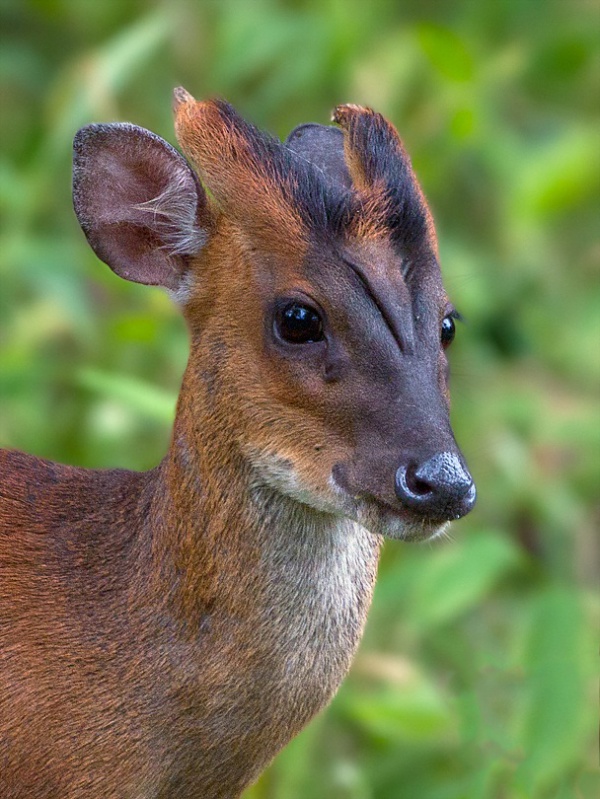Facts About Barking Deer (Kakar, Indian Muntjac)
The Indian muntjac, also known as the southern red muntjac or barking deer, is a fascinating deer species native to South and Southeast Asia. Classified as "Least Concern" on the IUCN Red List, this small deer features a soft, short coat that comes in various colors. It is an omnivore, feeding on a diverse diet that includes grass, fruit, seeds, and small animals. When startled, it emits a barking sound, which is why it is often referred to as the barking deer.
Distinctive traits further set the Indian muntjac apart. Males possess short antlers and canines, while both sexes have large scent glands used for marking their territories. These deer inhabit a variety of environments across South Asia, such as deciduous forests, grasslands, and scrub forests. They are known for their solitary nature, territorial behavior, and keen alertness to predators. Reproductively, they exhibit polygamous behavior, with females typically giving birth to one fawn at a time.
From an evolutionary perspective, Indian muntjacs have existed since the late Pleistocene epoch. They intrigue scientists due to their exceptionally low number of chromosomes—males have just 7, and females have 6—making them among the oldest members of the deer family. Their distinctive antlers also add to their uniqueness.
Despite their resilience, Indian muntjacs face threats such as hunting for sport, meat, and skin, particularly in agricultural areas where they are often seen as pests. Nonetheless, these deer play a crucial role in the ecosystems of Southern Asia. It is essential to continue conservation efforts to protect them and maintain ecological balance.

 Myanmar (Burma)
Myanmar (Burma)